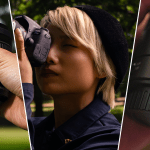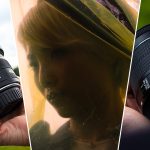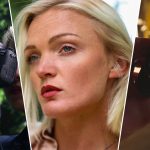Hello there. In this review, we’re going to compare two relatively affordable lenses, the Canon 24mm f2.8, also affectionately referred to as the Pancake lens, and the Canon 50mm f1.4, also known as the nifty fifty.
If you want to learn what both of these lenses are good at, and what their flaws are, this article is for you.

Aperture & Focal Length
As we begin, I want to have a quick look at the aperture and focal length first. In terms of aperture, the 50mm lens goes up to f/1.4, while the Canon 24mm lens opens up to f/2.8.
So what do those mysterious numbers actually mean, and is the higher number better?
Rather counterintuitively, the EF 50mm f1.4 lens takes the win, as it opens the widest, which allows in more light. This is crucial when taking photos in low-light conditions, as the more light you have available, the clearer the images will be.
So, as you might have guessed by now, the f-number being higher isn’t necessarily better. Generally speaking, the lower the number, the better, as the lower the number is, the wider the lens aperture can open, and that means more light that you can work with.
Ok, so now we know what the f numbers mean. What about the millimetres? What do 50mm and 24mm mean in the context of lenses?
So, the first thing you’ll notice, is that each lens only has one number, which means that they are not zoom lenses. A lens like that would have two numbers, like 18-55mm, or 75-300mm, indicating a range.
When you only have one number, that is what we call a prime lens. It can not be zoomed in and out.
But wait, isn’t that a bad thing? Shouldn’t you want that?

Prime
Well, the advantage of prime lenses is that they produce sharper images overall. Also, if you want to do portraits, for example, having a prime lens is usually all you need.
You see, 24mm and 50mm produce different results. In other words, even though all lenses distort the image in some way, 24mm will distort them differently from 50mm.
Not only that, but the 50mm lens will be more zoomed in than the 24mm lens. That means that the 24mm lens can fit more in frame, when compared to a photo taken with the 50mm lens, taken from the same spot.
So why is a fixed lens all you need for portraits? Wouldn’t a zoom lens be more versatile?
As mentioned earlier, lenses distort the image in different ways. That means that if you take a photo of someone at 50mm, and then at 100mm, even after stepping back a bit, to compensate for the extra zoom of the 100mm, the face of the model will look slightly different.
In other words, because the image is distorted differently, so is the face of your model. Therefore, over the years, photographers have generally come to the conclusion that 85mm is the ideal focal length for human faces.
Ideal Focal Length
As a result, using a lens that is at around 85mm is really all you need for portraits, unless you really want to experiment.
But wait, aren’t we discussing a 24mm and 50mm lens? If 85mm is the ideal focal length, why bring up portraits in the first place?
Well, both of these can actually be used for portraits, and one of them can actually be turned into an 80mm lens.
So, as you can see, you can actually get nice portraits with a 24mm lens. It’s more about how much you know, and having experience, rather than what equipment you’re using.
All that the equipment can do is make your life easier, while lending you its optical properties.
Optical Properties
What does that mean?
So, the 50mm f/1.4 lens, both because it is more zoomed in, and because it can open up to f1.4, gives you more Bokeh. That’s the background blur that everyone likes, which separates the subject from the background.
That is a result of its optical properties, which the 24mm f/2.8 can not really replicate.
Ok, cool, so they can both do nice portraits. What was it you said earlier about turning the 50mm lens into an 80mm lens?
So, when you mount the EF 50mm f/1.4 on a camera with an APS-C sensor, like the Canon 77D for example, the focal length of the lens changes to 80mm. The formula is the number on the lens, multiplied by x1.6.
As a result, the 50mm lens, when used on a camera like that, is actually really close to that ideal 85mm focal length. Pretty neat, huh?
So, in that case which focal length is better? Well, it depends on what you want to do. For potraits, the EF 50mm lens wins hands down. For other stuff, it depends on what you want to take photos of when you’re wandering around.
We’ll discuss a bit later in the review what each lens is specifically good at, but speaking of wondering around, how portable are these lenses?
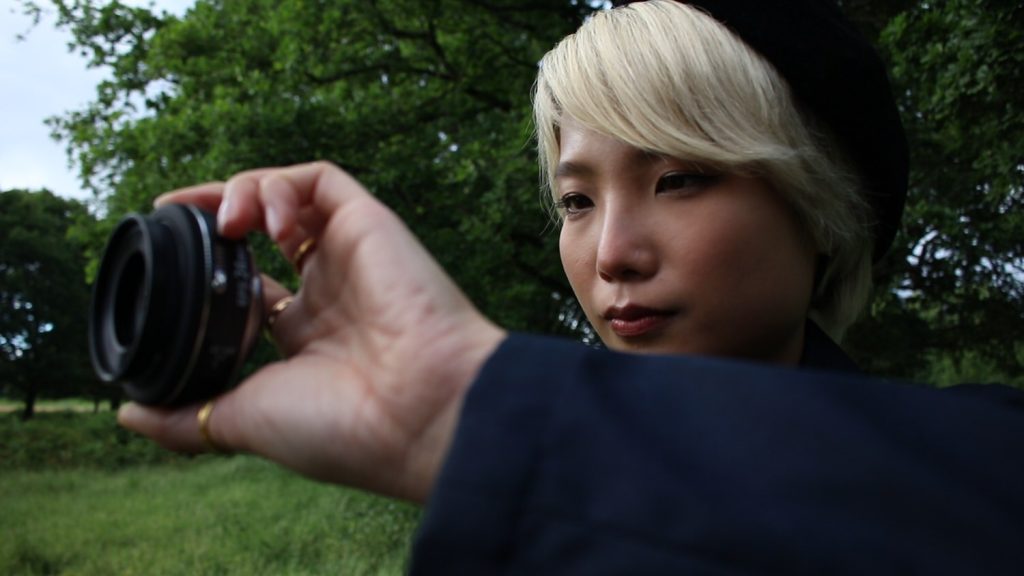
Size & Build
So both are relatively compact, which makes them ideal to just throw in your bag, and carry around, but one of them is significantly smaller.
So, the Canon EF 24mm lens measures 68.2 x 22.8mm, or 2.69 x 0.9″, and weighs in at 125g, or 4.41oz. The EF 50mm f1.4, on the other hand, measures 73.8 x 50.5mm, or 2.9 x 2″, and weighs in at 290g, or 10.2oz.
Obviously, the Canon 24mm f/2.8 lens is quite a bit flatter, hence the pancake nickname.
Ok, so we’ve established that the 24mm lens is smaller than the 50mm lens. How are they built? Unfortunately, both are rather plasticky, but they do both have metal mounts, which is a plus.

Image Quality
Alright, so we’ve established the lens’ portability and versatility. Now, let’s delve into the kind of images they can produce.
Minimum Focusing Distance
Firstly, we’ll discuss their minimum focusing distance – a key aspect that might be confusing for beginners.
Imagine you’re attempting to get close to your subject, say a flower, to take its picture. But as you move in closer, the camera suddenly refuses to focus. This is because you are too close to the subject, and the lens can not physically focus.
This distance varies among lenses, and simply put, a lens with a shorter minimum focusing distance allows you to get closer to the subject.
Why is that?
Like the human eye, a lens needs to maintain a certain distance from the subject to be able to focus. As a result, when considering which lens to purchase, it’s important to know what its actual minimum focusing distance is.
In the case of the 24mm lens, the minimum focusing distance is 16cm, or 6.3 inches. Meanwhile, the Canon EF 50mm f1.4 lens requires a minimum distance of 45cm or 17.72 inches.
I remember I was really confused when I came across this issue for the first time, so I figured I’d point it out to you, and thus save you some frustration.
Sharpness
Now that you’re aware of the minimum focusing distance, let’s move on to sharpness.
Budget lenses tend to have uneven sharpness, with the centre of the frame appearing sharper than the edges. This is also true for both lenses discussed, which show more clarity in the centre.
It’s worth noting that this is not a major issue, as most subjects will likely be located near the centre of the frame.
Additionally, you would need to zoom in significantly to see the differences between the pixels in the centre and those closer to the edges.
Vignetting
Now, let’s talk about vignetting. This is a phenomenon where the corners of an image appear slightly darker than the centre. While technically considered an issue, some photographers prefer vignetting in their photos, particularly for portraits.
The darkened corners can draw the viewer’s attention to the lighter centre, where the subject’s face is typically located. Additionally, vignetting can add depth, a 3D-like appearance to an image.
Chromatic Aberration
Another thing to consider is chromatic aberration, which can appear in photos taken with these lenses under certain conditions.
You may see chromatic aberration along straight lines in photos taken in low light, appearing as a blue, green, or magenta hue around the edges.

While technically a lens flaw, it can add a unique touch to photos and often goes unnoticed by the average person. Even if they do notice, they may not understand what it is or that it is a technical issue with the lens.
Image Stabilisation
Next up, let’s talk about image stabilisation. Sadly, neither of the lenses we’re discussing today has this feature.
Optical image stabilizationisation is a valuable feature, rarely found in affordable lenses. IS stabilizes the image through optics, not just digital means, allowing for smoother video, and reducing the risk of motion blur when taking photos with a slow shutter speed.
We’ll dive into video later, so stay tuned.
Autofocus
Before we continue on to the next chapter, let’s talk about the autofocus performance of these lenses.
If you look at the names of both of these lenses, you will notice that the EF 24mm f/2.8 lens has STM in the name, while the more expensive EF 50mm f/1.4 has USM.
STM and USM have to do with autofocusing, and they do not affect the quality of the image. In short, USM lenses tend to be bigger, and more expensive, with more precise focusing, while STM lenses tend to be cheaper.
As a quick side note, rather interestingly, STM lenses are quieter when focusing, compared to USM lenses. They also tend to be slower, which can produce better results when doing video.
Compatibility
Right, so there are pros and cons to both, especially in regard to autofocusing. So, what cameras can I mount them on?
The answer is in the name. The Canon EF-S 24mm f2.8 works with Canon’s budget-friendly cameras, specifically, those with an EF/EF-S mount, like the Rebel range.
However, it won’t work on Canon cameras with only an EF mount, such as the Canon 6D.
On the other hand, the EF 50mm lens is compatible with both EF-only cameras and EF/EF-S cameras, as it works with EF mounts. This covers the majority of Canon’s DSLRs.
Simply put, the EF 50mm lens is compatible with more cameras than the EF 24mm lens.
Vlogging
In terms of vlogging, neither of these lenses is ideal. They both lack built-in IS, which means your footage will be shaky. However, one of them is better than the other.
The EF 50mm f/1.4 has a big issue when it comes to vlogging – it’s too zoomed in. Its 50mm focal length is already close up, and when mounted on an APS-C camera, it becomes an equivalent of 80mm, which is not suitable for handheld vlogging.
The 24mm lens, however, would be a better choice as it would allow you to fit yourself better in frame.
Surprisingly, the best budget lens for vlogging would be the Canon EF-S 18-55mm kit lens, as it has IS. However, it does have its own limitations.
It’s worth noting that not all 18-55mm kit lenses have IS, only those that specifically have IS in the name.
I have reviewed both the EF-S 24mm f2.8 lens and the kit lens separately on my YouTube channel and will soon be making a comparison video. To see it, be sure to subscribe.
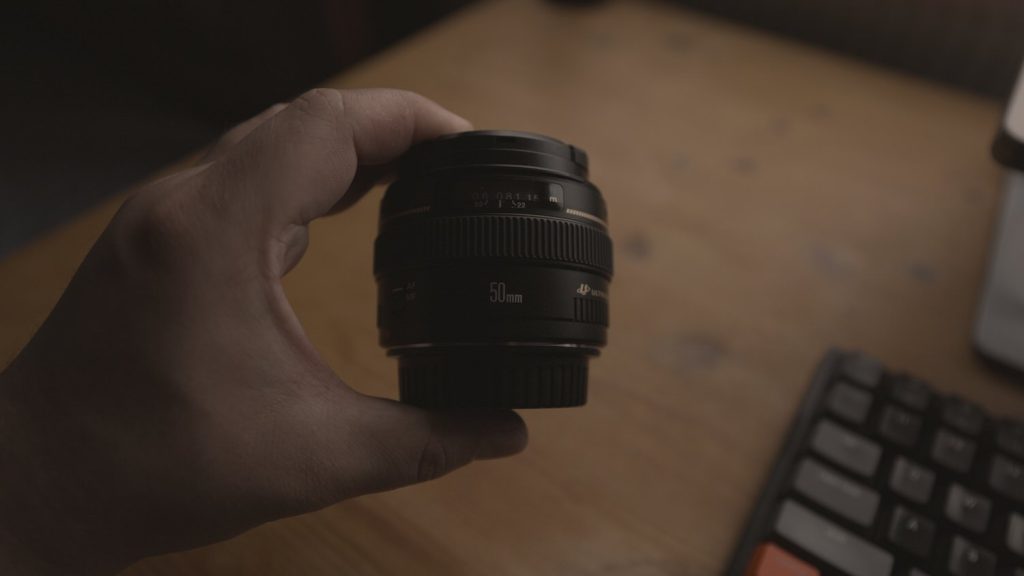
YouTubers
Ok, so the 50mm lens isn’t ideal for handheld vlogging. What if I just want to sit down, and place my camera on a tripod? Would that actually work?
If you plan to sit down and place your camera on a tripod, the 50mm lens would be a better choice than the EF-S 24mm lens.
The EF 50mm f1.4 allows more light, enabling filming in dimly lit environments, and it also creates more Bokeh, that blurred background that everyone loves.
If you’re filming yourself with the camera on a tripod, the 50mm lens would be a better choice over the 24mm.
Applications
In terms of specific uses, both lenses can work for portraits, especially if you don’t get too close to your subject with the 24mm lens. The EF 50mm f1.4 is better suited for portraits, but both can be used.
Street Photography
What if I want to do street photography? Both lenses can work for street photography, but they offer different benefits.
The 24mm lens provides a wider view of the surroundings, while the 50mm lens is better for capturing details.
Additionally, both lenses are compact, making them less intimidating when taking photos on the street. In general, a more compact setup is ideal for street photography, as you’ll draw less attention.
Product Photography
Ok, what if I want to do product photography?
For product photography, I would recommend the 50mm lens. Its longer zoom allows for close-up detail shots, and it also performs better in low light.
Landscape Photography
Right, what about landscape photos? For that, either lens can work, but if you’re starting out, the EF-S 24mm lens is recommended.
How about fashion photography? For fashion photography, the EF 50mm lens is the better choice, due to the fact that it is far more suitable for portraits.
Documentary
What about documentary-style shooting? For documentary-style shooting, I would say that the EF-S 24mm lens is preferred, as it allows for capturing more in frame, due to how wide it is.
Sports or Wildlife
What if I want to capture sports, or wildlife? Neither lens is suitable for that purpose, as they don’t offer enough zoom. Anything or anyone that you’d like to photograph would just be too far away.

Wedding Photography
What if I want to capture events, or weddings? In that case, both lenses can be used, depending on the desired shot.
If you want to capture larger groups, the EF-S 24mm lens is more suitable, due to its wider field of view. For detail shots, the EF 50mm lens is the better choice, as it provides a more zoomed-in perspective, without the need to get too close to the subject.
General Photography
If you’re looking for a more general lens, that can handle various photography styles, I’d suggest the EF 50mm f/1.4 lens out of the two.
This lens has a wider aperture than the EF-S 24mm f2.8 lens, allowing for more light to reach the sensor, thus resulting in cleaner photos in various lighting conditions. Hence, the EF 50mm lens would be a better all-round choice in this case.
Control
How easy are they to use?
In terms of handling and ease of use, both lenses are prime, and thus lack zoom rings, but they do have focus rings instead.
The focus rings are relatively smooth, but may become stiffer over time. They also feature standard AF/MF buttons, allowing for seamless switching between autofocus and manual focus.
Longevity
Right, so how long can I expect them to last? Both lenses have metal mounts, which bodes well for their longevity. However, they lack weather sealing, so it’s best to be cautious when using them in unfavourable weather conditions.
When I buy a new lens, I always add a UV filter to it as an extra layer of protection for the lens element.
For instance, my Canon RF 15-35mm lens, which I currently use for most of my B-roll footage, is fitted with a Sigma ceramic UV filter that stays on at all times. As soon as I received the lens, the filter was attached.
Although the filter is somewhat pricey, costing around 10% of the cost of this high-end lens, I believe it’s a worthwhile investment.
This also eliminates the need for lens caps, although they can still be used if preferred.
If you do want to mount a filter on either of these lenses, you’ll need to know their filter size. In the case of the EF-S 24mm lens, the size is 52mm, and for the EF 50mm f1.4 lens, it’s 58mm. This is a crucial aspect to keep in mind while buying filters as it is different from the lenses’ focal lengths.
I remember the first time I bought filters for my lenses, I thought the focal length was the filter size, so when purchasing a UV filter for my 50mm lens, I ended up with filters I couldn’t actually use.
Hopefully, this bit of information will save you that expense.

Conclusion
In conclusion, which one should you buy?
So, both lenses are good, but they excel at different tasks. In short, if you’re looking for a lens specifically for vlogging and have to choose between these two, the EF-S 24mm lens is the better option for the reasons mentioned earlier.
If you’re looking for a lens for videography, while using a tripod, the EF 50mm f/1.4 lens is a better choice.
If you’re looking to upgrade your photography and videography skills, you might want to check out the mid-range lens review playlists on my YouTube channel.
I’ve reviewed all sorts of lenses, from the Canon EF 50mm f1.4 and EF 50mm f/1.8, to the Canon RF 15-35mm f2.8 L IS USM, and Canon RF 85mm f1.2 L USM.
Recommendations
I hope this has been helpful. I invite you to have a look at some of my other articles. We have something for everyone, whether you’re interested in audio, or cameras and lenses. Alternatively, if you prefer video reviews, feel free to have a look at my YouTube channel.
Finally, down below you will find all of the items I talked about in this article.
